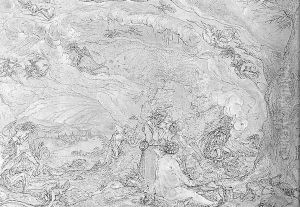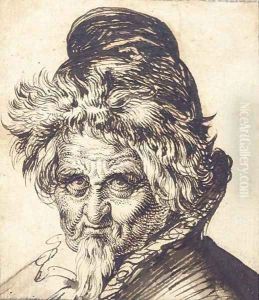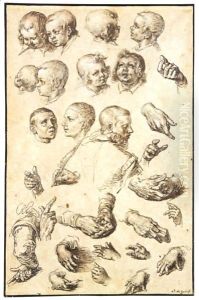Jacques de Gheyn Paintings
Jacques de Gheyn II, also known as Jacob de Gheyn II, was a Dutch painter and engraver, born in Antwerp in 1565. His father, Jacques de Gheyn I, was a glass painter, tapestry designer, and founder of the family's artistic lineage. De Gheyn II moved to Haarlem at a young age, where he studied under the Flemish painter and printmaker Hendrick Goltzius. He was greatly influenced by Goltzius's technique and style, which is evident in his early engravings. De Gheyn was a contemporary of the more famous Dutch artists like Rembrandt and Hals and played a significant role in the development of the Dutch Golden Age of painting and printmaking.
De Gheyn's oeuvre is diverse, including history paintings, portraits, still lifes, and landscapes. He is particularly noted for his work as an engraver and draftsman. His most famous series of engravings is 'The Exercise of Arms', a manual on military drill that was widely distributed and influential in the 17th century. These engravings are characterized by their meticulous detail and dynamic composition, reflecting both his artistic skill and a keen interest in the military practices of his time.
In 1585, de Gheyn moved to Leiden where he continued to develop his skills and was influenced by the emerging Baroque style. Later in his career, he moved to The Hague, where he became the official draftsman of the States-General, the Dutch governing body, and worked closely with Maurice of Nassau, Prince of Orange. His connection with the court and military leaders provided him with a steady stream of commissions for portraits and other works.
Throughout his life, De Gheyn collaborated with many artists and was a teacher to several pupils, including his son, Jacques de Gheyn III. Despite his success, there are few records about his personal life. Jacques de Gheyn II died in The Hague in 1629. His works are held by many major museums around the world and continue to be studied for their contribution to the Dutch Golden Age and the history of engraving and printmaking.




